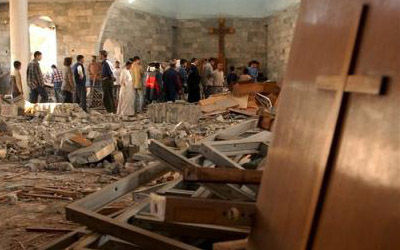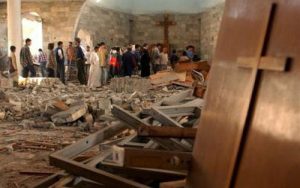
As Christians around the world celebrate the nativity of our savior, we gather in churches and hear the story of a Middle East where the holy family, as religious minorities in the Roman Empire, witnessed the birth of Christ, far from their hometown. We will recall that they then fled to Egypt as political refugees.
Two thousand years later, the Christian communities of the Middle East — descendants of the first Christians — persevere in their faith in Christ. They live in an era of violence, unrest and persecution. Many have been forced to flee their homes, and many more their countries.
 The archbishop of Canterbury, Justin Welby, recently wrote of the plight of Christians in the Middle East, stating: “Many have left. Hundreds of thousands have been forced from their homes.” He warned that “across the region Christian communities that were the foundation of the universal Church now face the threat of imminent extinction.” I am sorry to say the archbishop is not overstating the dire nature of the plight faced by Christian communities throughout the region.
The archbishop of Canterbury, Justin Welby, recently wrote of the plight of Christians in the Middle East, stating: “Many have left. Hundreds of thousands have been forced from their homes.” He warned that “across the region Christian communities that were the foundation of the universal Church now face the threat of imminent extinction.” I am sorry to say the archbishop is not overstating the dire nature of the plight faced by Christian communities throughout the region.
Lebanon, the last safe home to Christians in the Middle East, has generously welcomed a great number of Syrians fleeing their country’s civil war. A nation of 4 million people is hosting an estimated 2 million refugees and displaced people, the highest per-capita home to refugees in the world. This population increase has presented legitimate challenges to Lebanon’s infrastructure, economy and education system. After seven years of conflict in Syria, with no end in sight, more children are born in Lebanon to displaced people and refugees than to Lebanese citizens.
Lebanon’s delicate, pluralistic balance of power between faith groups could be toppled in a complete redrawing of the demographic map. The lack of a roadmap for charting the safe return of refugees and displaced people to Syria is not providing a viable future for these victims.


